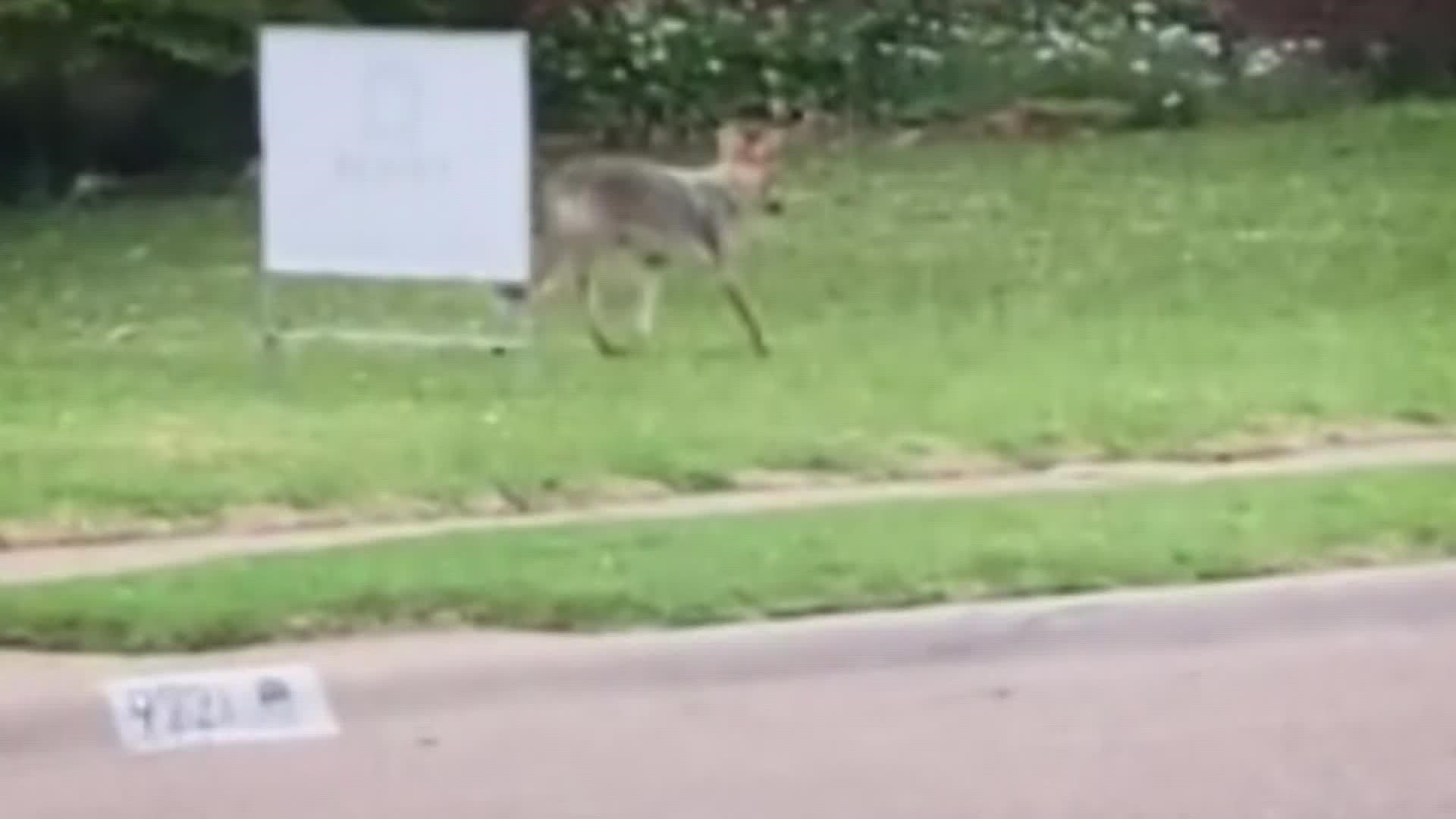DALLAS — There have been hundreds of coyote sightings across the Dallas area and people are more vigilant after a 2-year-old was violently attacked by a coyote a few months ago.
WFAA spoke with wildlife specialists who said with the population growth in Dallas, and with the new hotline, their coyote management plan is helping with keeping people safe.
“I was surprised to see coyotes in the wooded area off Northwest Highway," said Guillermo Galindo.
Seeing coyotes was too close for comfort for Galindo, who lives in the White Rock area.
“They want to exist, and they want to eat,” said Galindo.
Since June, Dallas city officials said the coyote management plan’s hotline received more than 800 calls for coyote sightings and 50 of them from outside of Dallas.
“Off to the east side, and to the west,” said city councilors during Monday morning's meeting.
City councilors said they’re working on educating the public about coyotes.
“We have plans for signage at White Rock Lake,” said city councilors.
The signs come after Landon ”Knox” Thomas was attacked by a coyote in May.
Knox was dragged down on his front porch and was hospitalized with injuries to his head and a fractured jaw.
“That particular coyote followed us one day,” said Galindo.
With fear in the neighborhood, why are we seeing so many coyotes?
“Plants are starting to lose their leaves. Leaves are starting to drop. As vegetation clears out, we’re simply just seeing them,” said Sam Kieschnick, an Urban Biologist from Texas Parks and Wildlife.
“A big chunk of it this year is related to drought. Coyotes are a special species. They can live about anywhere,” officials said at Monday's meeting.
With that, coyotes are always looking for food.
City officials are working on a feeding ordinance. They’re waiting for city attorneys to give a final green light. Once that’s ready to go, they will have a meeting with the public.
“This is something to encourage people, please don’t feed the coyotes,” said Kieschnick.
So far, city officials removed four coyotes and they tested negative for rabies.

